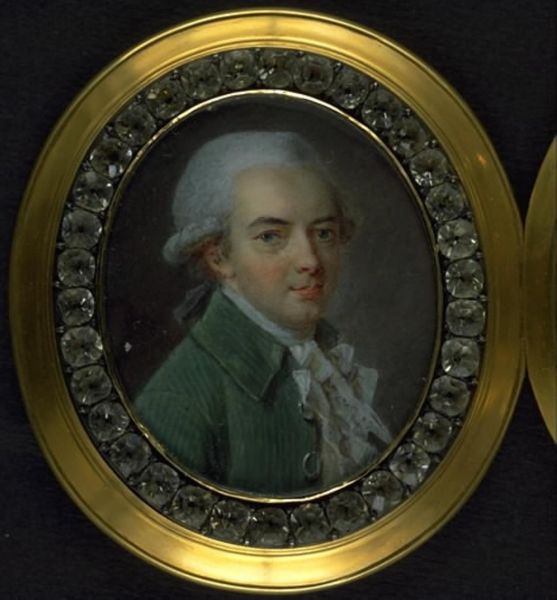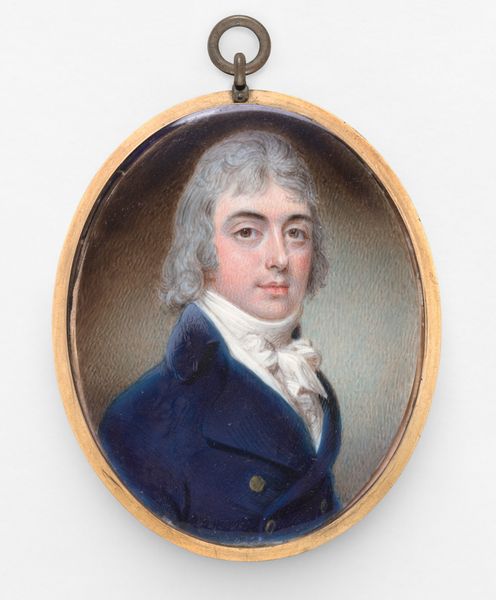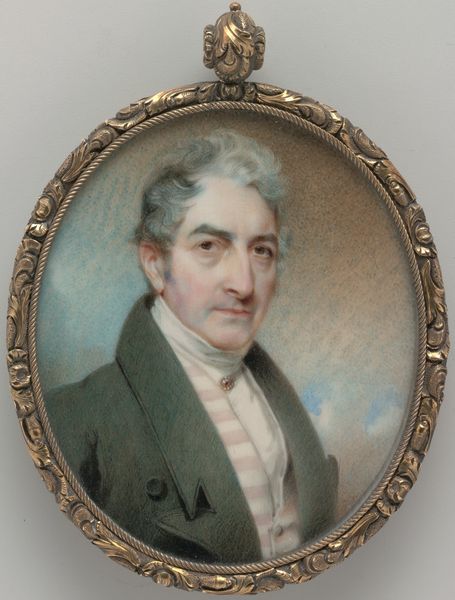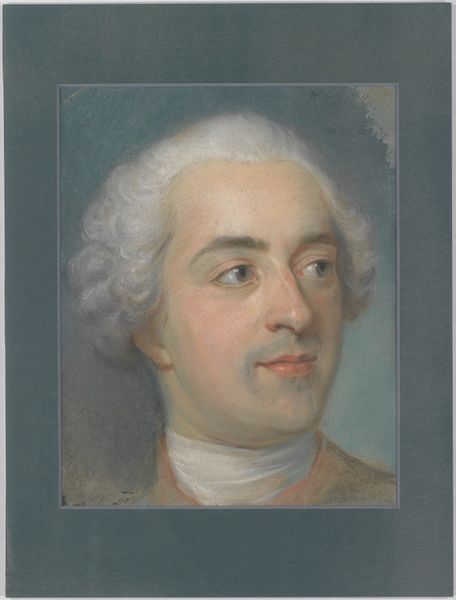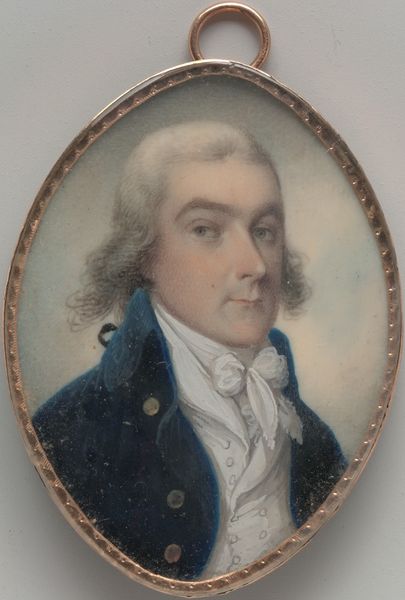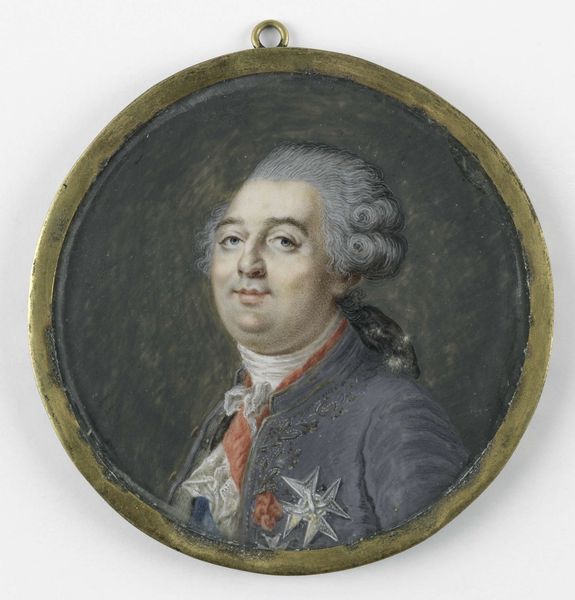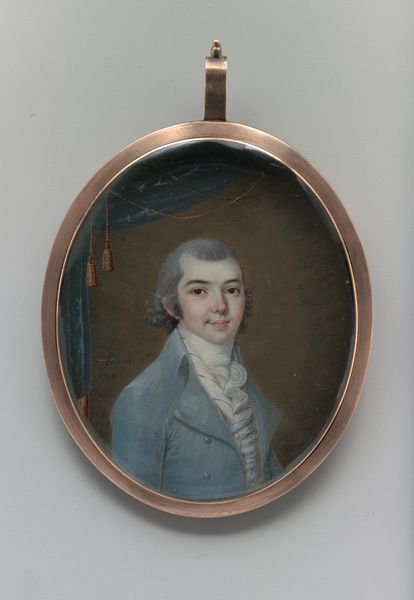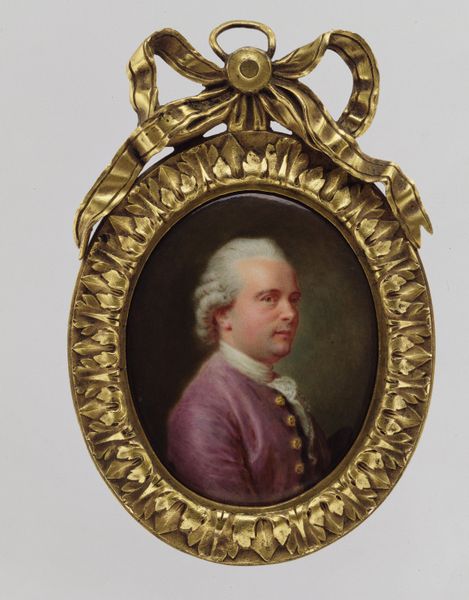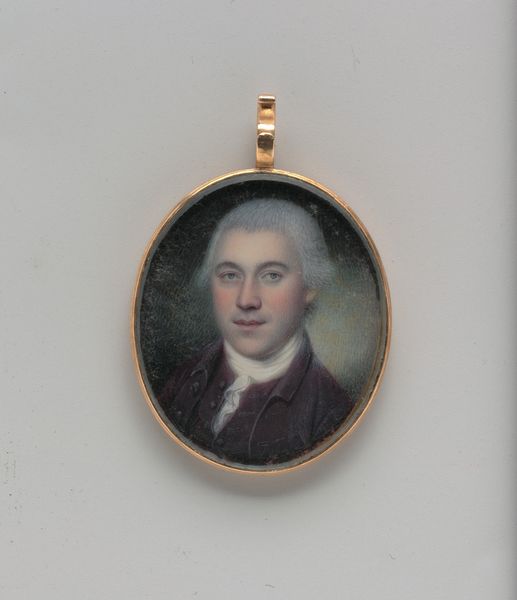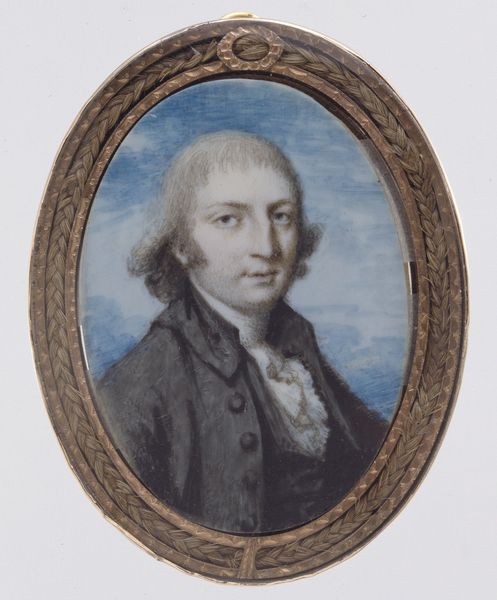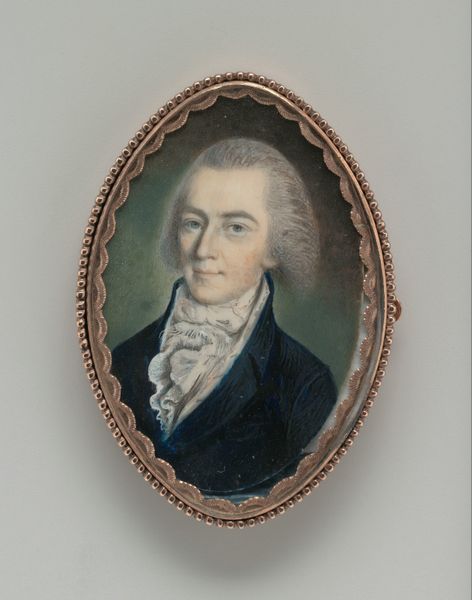
painting, sculpture
#
portrait
#
neoclacissism
#
painting
#
sculpture
#
england
#
framed image
#
sculpture
#
decorative-art
#
miniature
Dimensions: 3.5 × 3 cm (1 3/8 × 1 3/16 in.)
Copyright: Public Domain
Editor: This is Richard Crosse's "Portrait of a Man," likely from the late 1700s, at the Art Institute of Chicago. It's so tiny! It looks like it could be a locket. I am immediately drawn to the subtle rendering of light on his face, which brings such calm and collected aura. What does this portrait evoke in you? Curator: Well, isn't it captivating? The precision and delicacy always remind me of trying to capture a fleeting thought, turning something ephemeral into a tangible piece of memory. Crosse, nestled firmly within the Neoclassical movement, excels at these miniature portraits, these tiny worlds reflecting the grand tastes of the era. What strikes you about the sitter's gaze? Does it feel personal, or perhaps something more…performative? Editor: Performative, definitely. There's a sense of carefully constructed image, like he's presenting an idealized version of himself. Does that connect to the fashion and powdered wig of the time? Curator: Precisely! Think about it - the late 18th century was an era obsessed with appearances, with presenting the ideal self to society. These miniatures were often tokens of affection or status symbols, circulated among a select group. So, what seems at first glance like a simple portrait transforms into a window into the complex social rituals of the time. It makes you wonder, doesn't it, about the stories hidden within those painted layers. Editor: It certainly does! It makes me appreciate how much these tiny portraits could say about someone and an era, capturing not just a face, but a whole world of social meanings. Curator: Absolutely, a miniature universe within an oval frame! And I must confess, they just don't make wigs quite like that anymore.
Comments
No comments
Be the first to comment and join the conversation on the ultimate creative platform.
